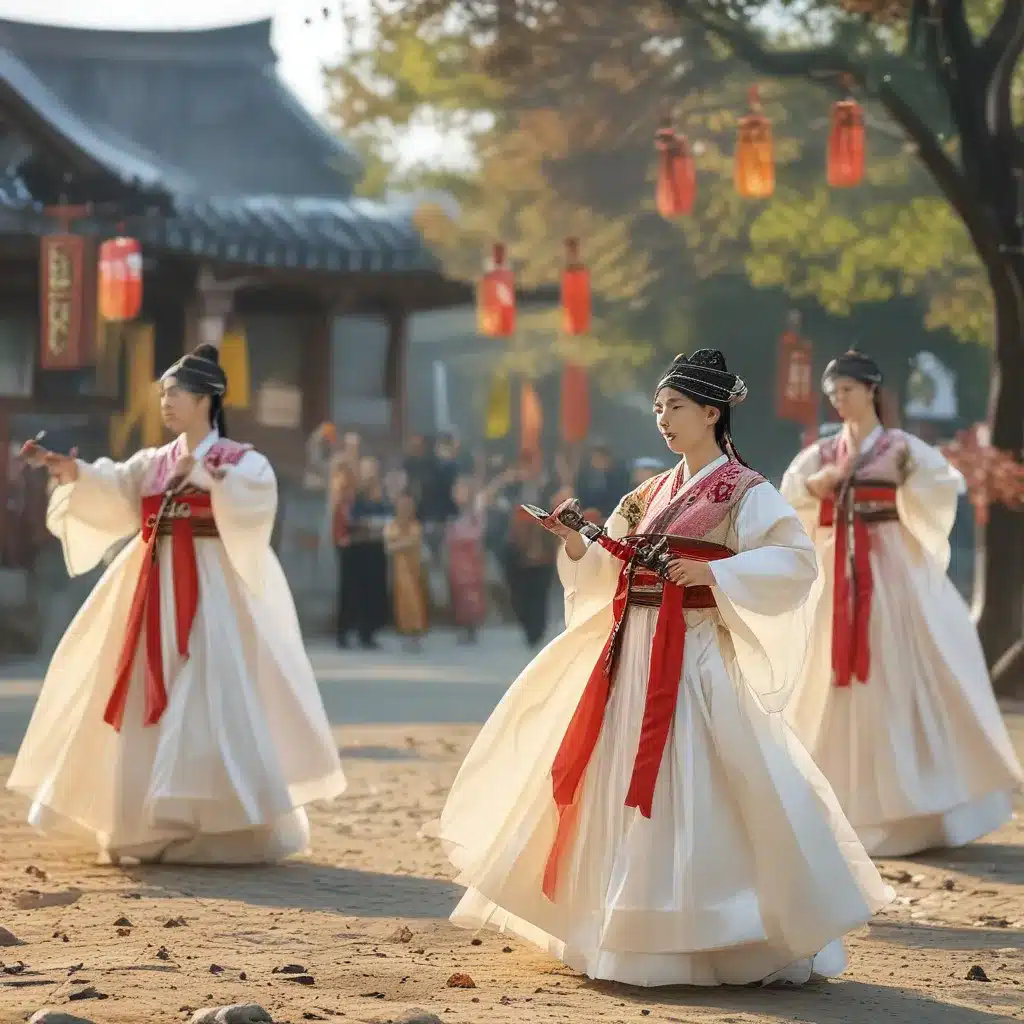
A Melodic Journey through Seoul’s Vibrant Cultural Landscape
As I step onto the winding trails of Namsan Mountain, the bustling energy of Seoul fades into the background, replaced by the serene melody of traditional Korean music. The Namsan Gugak Festival, an annual celebration of Korea’s rich musical heritage, is about to unfold, and I can hardly contain my excitement.
This festival is a true gem, nestled amidst the lush greenery of one of Seoul’s most iconic landmarks. Over the course of three weeks, scores of world-class Korean musicians and dancers take to the stage, captivating audiences with awe-inspiring performances that transport us back in time. From the haunting beauty of pansori (traditional Korean opera) to the mesmerizing rhythms of samulnori (Korean percussion ensemble), the festival is a veritable feast for the senses.
The Korea Times reports that the festival kicks off with a three-day series of concerts at the historic Bukchon Hanok Village, where the melodies reverberate through the charming traditional Korean homes. But the real highlight, they say, is the two-day extravaganza at Seoul Plaza, where over 100 gugak (traditional Korean music) artists come together to captivate the audience.
As I make my way through the bustling festival grounds, the air is thick with the scent of street food and the gentle hum of conversation. Vendors peddle traditional crafts and instruments, while the sounds of gayageum (a 12-string zither) and daegeum (a large transverse flute) fill the air. It’s as if I’ve been transported to a different era, one where time seems to slow down and the world is in perfect harmony.
Exploring the Diverse Repertoire of Korean Traditional Music
One of the things that makes the Namsan Gugak Festival so special is the sheer breadth of the musical repertoire on display. From the meditative and introspective to the energetic and exhilarating, there’s something for every musical palate.
According to Yonhap News, the festival will feature a wide array of traditional Korean music, including pansori, Korean folk songs, and performances by both traditional instrumentalists and foreign musicians. I’m particularly excited to witness the original mask dance, a captivating blend of movement, music, and storytelling that dates back centuries.
As I wander through the festival grounds, I’m struck by the sense of reverence and attention that the audience pays to each performance. It’s as if they’re not just passive observers, but active participants in a centuries-old tradition. The performers, too, exude a level of mastery and dedication that is truly awe-inspiring.
One of the highlights for me is the opportunity to attend a hands-on workshop on traditional Korean instruments. I’ve been fascinated by the elegant and mysterious gayageum ever since I first heard its haunting melodies, and I can’t wait to learn more about its rich history and playing techniques.
Immersing in the Vibrant Cultural Tapestry of Seoul
But the Namsan Gugak Festival is not just about the music – it’s a celebration of the entire cultural tapestry of Seoul. As I explore the various venues scattered throughout the city, I’m struck by the seamless integration of the ancient and the modern.
At Wonseo Park, I stumble upon a serene performance of traditional Korean instrumental music, the gentle notes drifting through the air like a gentle breeze. Meanwhile, at the majestic Donhwamun Gate of Changdeokgung Palace, I’m treated to a mesmerizing display of mask dances, their vibrant colors and exaggerated expressions transporting me to another time and place.
And of course, no visit to the festival would be complete without a stop at the stunning Namsan Gukakdang, a state-of-the-art performance hall dedicated to the preservation and promotion of Korean traditional music. As I step inside, I’m surrounded by the rich history and artistry of this cherished cultural tradition, and I can’t help but feel a deep sense of reverence and appreciation.
Throughout my time at the festival, I’m struck by the warmth and hospitality of the Korean people. The volunteers who guide me through the various events are not just knowledgeable, but genuinely passionate about sharing their cultural heritage. And the fellow audience members, from curious visitors to seasoned aficionados, all seem to share a deep-rooted connection to the music and dance on display.
Embracing the Spirit of Tradition in a Modern City
As the final notes of the festival fade into the evening, I can’t help but reflect on the delicate balance that Seoul has struck between its rich cultural traditions and its rapidly evolving modern landscape. The city’s hotels, like the Stay Inn Seoul, seamlessly blend the old and the new, offering guests a unique opportunity to immerse themselves in the vibrant tapestry of Korean culture.
It’s this seamless integration of past and present that makes the Namsan Gugak Festival such a captivating experience. Here, in the heart of one of the world’s most dynamic metropolises, the ancient melodies and movements of Korea’s musical heritage are celebrated and preserved, a testament to the resilience and ingenuity of a culture that has weathered the tides of time.
As I make my way back down the winding trails of Namsan Mountain, the echoes of the festival still ringing in my ears, I can’t help but feel a deep sense of gratitude. This is a place where the past and present coexist in perfect harmony, where the universal language of music transcends all borders and boundaries. It’s a reminder that in our ever-changing world, there is still beauty and solace to be found in the timeless traditions that have sustained us for generations.
So if you find yourself in Seoul, be sure to make the Namsan Gugak Festival a priority on your itinerary. Immerse yourself in the rich cultural tapestry of this remarkable city, and let the timeless melodies of Korea’s musical heritage transport you to a world of wonder and enchantment.

